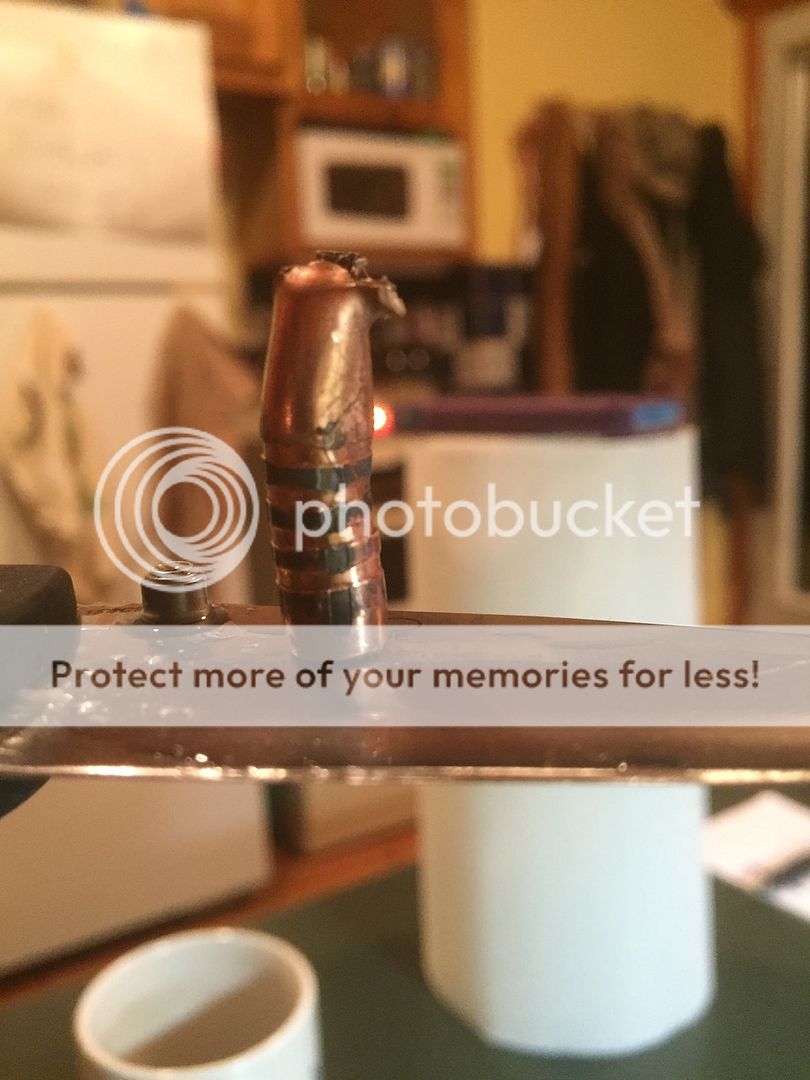Elk are seldom 100% broadside to the shooter. It helps to allow for the angle or the quartering as it is commonly referred to. Breaking any upper leg bones is always helpful. I shot a large bull full in the chest, hit the heart, he spun and took off down a steep heavily timbered mountain. My next and only shot was in the left hip. That broke the leg bone and put him down. Lots of times they do not know they are dead, adrenaline takes them quite a ways, especially downhill . Make a great first shot and then get the next one in as soon as possible. One of the rare problems of lighter bullets, is the deflection possible when hitting hard, heavy bones in an elk. Most any bullet will kill an elk but for the times your bullet hits heavy bone, especially at an angle, a 180g or larger lead bullet is hard to beat. It has a much better chance of breaking bone and going into the vitals than lighter bullets.
The below bullet was the first shot at a large old bull I shot last year. Bullet is barnes 150g ttsx at 2900fps. About 170yds. Bullet was under hide at top of back/neck area. I was amazed at how bent it was. First time a barnes ttsx has not expanded for me. It glanced off shoulder bone. I was holding a little forward in order for the shot to hit the vitals as the animal was at 45degree angle to me. I shot again thinking I missed as I was higher, the elk went down with bullet mushrooming and passing through. If I had hit the same first shot with my 375 it would have probably done the job.








